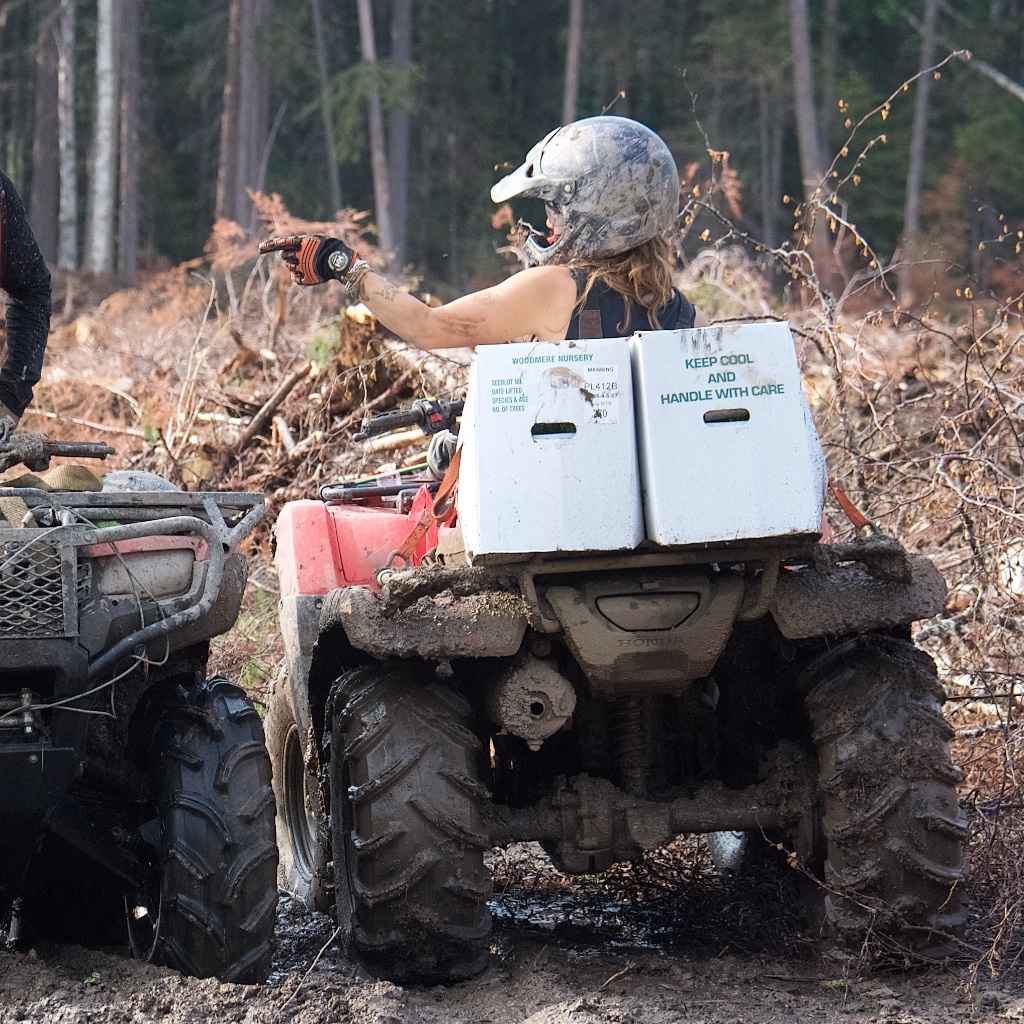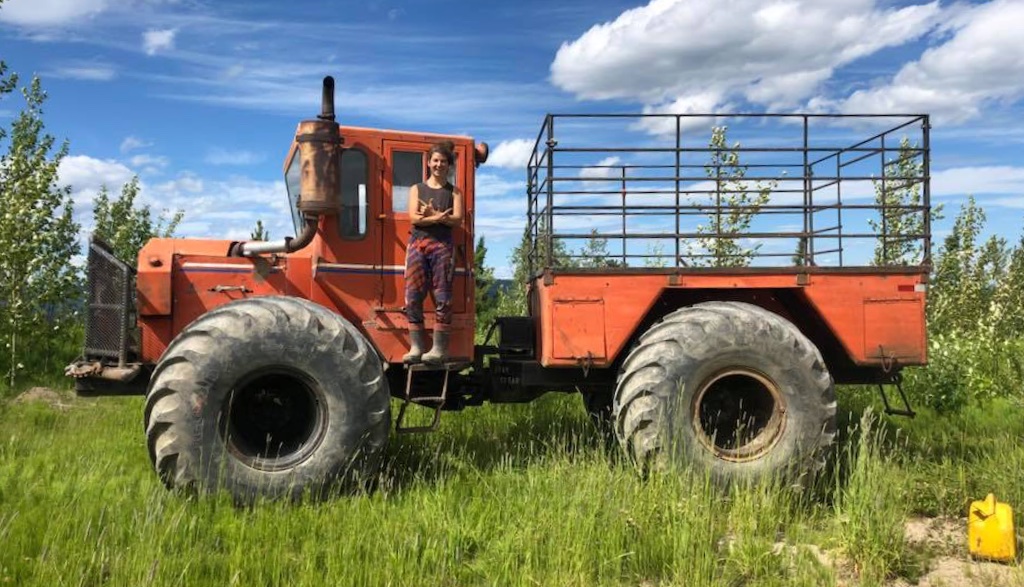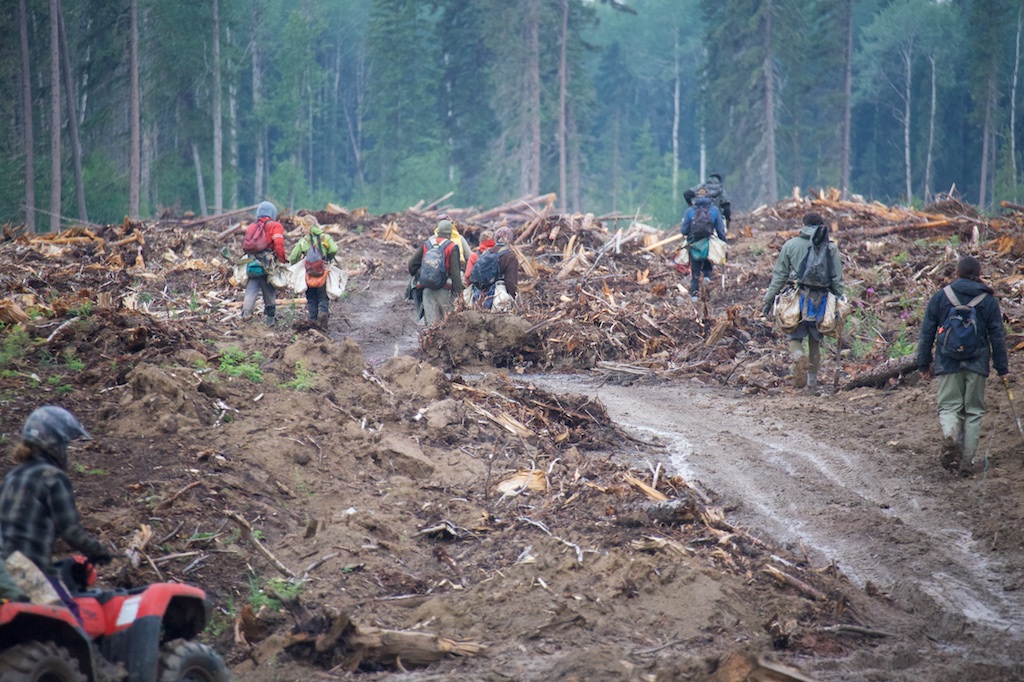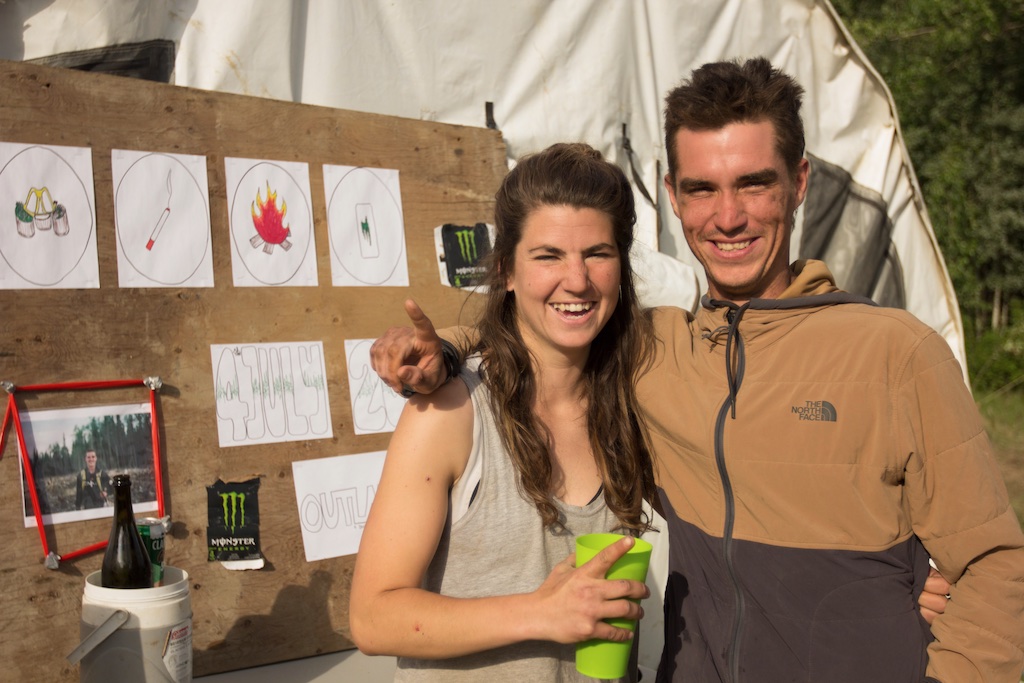Maya Anders, Camp Manager – a Trail Blazer for Women in Management in the Tree Planting Industry

Maya, how did you get into tree planting?
As a teen, I worked for a couple of years as a counsellor at an outdoor summer camp for kids. I was running one of the programs with a friend who had just come back from his first year of tree planting. Every day he would tell me stories and I thought, “That sounds great!”
I said, “Nick, Sign me up! I’m coming next year.”
He said, “Ya ya.”
As the time got closer, he said, “Are you sure? I know I talked about a lot of fun stuff, but it’s really hard. You’re going to find it to be pretty tough.”
“Sign me up, Nick. I’ll figure it out.”
That was it. I went my first year. I was 17 years old – the youngest one there. Drinking age was 19, so I couldn’t get into the bars on my nights off. It was the craziest year of my life. I was so happy he had given me the chance to come out.
I can imagine other tree planters going back to the city and talking about tree planting. Some people are crazy enough to sign up and give it a shot. You only really know how capable you are if you get out there. And sometimes the job is for people and sometimes it’s not, and both are okay.
Moving up!
As of the summer of 2019, Maya has been involved in the tree planting industry for 13 years.
She worked in northern Ontario for seven years. In her fourth year of planting, she tore the rotator cuff in her shoulder. She had become part of the community and developed good relationships and her bosses said they wanted her to be on management, and she said, “Sure!”

Being a girl in management in the tree planting industry back then was pretty tough. “I was 21 years old when I became a crew boss, and I always had this feeling like I had to do extra stuff just because I was a girl. I had to prove myself. One year, I ran a crew of 17 guys, and I was always working with all-male management. I grew up in a boy’s club.
Six years ago, May was offered work in Alberta and B.C. She supervised in High Level and Fort Nelson, then did some heli work. She supervised a contract in B.C. and planted on the coast, which was “an incredible experience…It’s been cool to explore the industry across Canada.”
Maya then worked for several years as a tree deliverer for Outland. “I was the only female deliverer they had. Before that, a female might be a tree inspector or a crew boss. Driving an ATV and delivering trees all day was considered a boy’s job. But it’s not about how big and strong you are; it’s about working smart, and anyone can do that.”
This planting season, working as the Manning Project Manager, marks Maya’s fourth year working for Outland Reforestation.


A Trail Blazer for Women
It’s been interesting as a female in the industry to see all of these changes over the past 13 years and trying to grow into it and be comfortable. When I started in Ontario, it was common in bush camps for male supervisors and males, in general, to be super egotistical. There was a lot of sexual harassment. It’s come a long way. In BC especially there are a lot of females in management.
Running a camp as a girl has its challenges for sure. It helps that I have been a crew boss and deliverer. I think it’s important to know how to do the different jobs around the camp – to know what each job entails and get all of the perspectives so you can offer guidance.
This year in the camp, Mel (the cook) and I were the only female management. In the Grande Prairie camp, half the management was female which was great. Women bring a nurturing quality and a different perspective.
There’s no need for a gender divide. You saw the girls planting out there. They’re incredible! People may think girls can’t drive a quad and huck boxes of saplings all day, but actually, yes they can.
Even this summer, I’d go to a place and say I’m looking for this part and they’d be like, “Oh, you’re the supervisor? You look like a young girl.”
And I’m like, “That’s right. You bet.”
I just do my thing.

What I love about being on management as a female is that you get girls like Alex that come out and are doing this hard-core job. They see a female on management and they’re like ‘Wow! I could learn how to do all these things and I am capable of doing all these things.’
When I was working as a deliverer, I started hosting a ladies’ night and I’d take them out and show them how to shoot my gun and we’d have some beers. When I took them out this year, a lot of them had never shot a gun before. It’s an empowering thing for them to realize that they can learn and do all these things, drive a quad, chainsaw some trees…

Photo by Niko
What do you do when it’s not tree planting season?
I do forestry work in the winter. After a block is planted, there are a number of assessments required by law and by the mill to monitor how the forest is doing. For the last performance survey, I go into these 14-year-old cut blocks, throw a two-metre plot and record how many trees and what species are coming back? I do some detailed five-metre plots – every 4th plot – and record how tall is my biggest spruce, my biggest aspen, my biggest larch? This information goes back to the mill and the government so they can determine: What is the yield? Is it free to grow? Is it sufficiently stocked? What will the rotation age be?
“When I’m walking through a 14-year-old cut block, I’m bushwhacking. It’s pretty crazy. The company I do this work for is based in Grande Prairie and they work for all 23 mills in Alberta. I’ll work from Nordegg up to Zama City (northwest of High Level), and over to Fort McMurray… I get to see what a lot of post-plant areas look like across the province.
“It’s cool to see all of these different species of trees growing. Sometimes you’ll get a count of 100 aspen in a two-metre plot. Sometimes you’ll get spruce trees that are five metres tall. In a wetter area they may be three meters tall. It depends on where and how they were planted and what stand tending (silviculture) was done in the first few years (e.g., brushing, or herbicide spray to boost the species that have been planted). Aspen, poplar and birch come back on their own in many areas. There are some areas closer to the foothills and Rockies where it’s all conifers. Sometimes, in a 14-year-old cut block, I’ll count over 70 pine in a two-metre plot.
“Last year, from February to May, I worked for Outland, packing up camps, managing the yard, taking inventory, and getting camps ready to go for the next planting season.
“I took January and February off, came home, then went to Mexico.

Where’s home?
I grew up near Montreal, but I don’t have a home base. It’s a crazy lifestyle. When time off comes, there’s not enough time to rent a house.
When I’m surveying, I have 8 to 12-day shifts out of a hotel or logging camp.
It’s exhausting, especially working in northern Alberta in the winter, hiking through huge amounts of snow and climbing over logs. Working in the cold, like -30℃, uses up a great deal of energy. You’re so tired, you come back and plan for the next day and go to bed and wake up at 5 a.m. There’s no room for past times.
What do you love to do in your rare free-time moments?
I do film photography and play guitar.
I Inherited a Leica film camera, the best film camera of all time. I love shooting film – 36 shots in a roll – you have to take your time. It’s fun, after 8 months away, to get the pictures developed. What’s on that roll? I usually shoot colour, but switch to black and white for portraits and pictures of tree planters. I’ve got some epic portraits of tree planters in black and white.
I have photos from work and travel. It’s a fun documentation of my crazy life. When I get my own place, I’ll build a dark room.
Sharon, the pictures you and Niko took show it’s such a crazy world – tree planting. It’s a unique lifestyle and culture – so many people from different parts of the country and the world (South Africa, Ukraine, Lebanon) and different walks of life, all coming together in one spot.
It’s a treat for these guys to come out of the bush and show their parents photos of something that’s so hard to explain.
I was showing your pictures to my parents and they’re like “What?!”
And you came out on the craziest day. I couldn’t believe you were still trekking!

What kind of music do you play?
I grew up on folk and blues, bluegrass, country, and rock and roll. I play mostly folk and blues on guitar.
I sing too. I have a twin sister in Montreal, who is an incredible musician. She does shows all the time. We’ve been playing quite a bit this past week which has been super nice. We’re going to do some recording together.
It’s nice to not be in full-throttle work lifestyle and actually just do things I want.

How has your career in tree planting shaped your life?
I’ve learned so many skills – even just appreciating a house – I’m at my parents’ farm – I’m in a bed and it’s just great!
My dad got 20-year-old ATV and I’m looking at it and asking if it needs an oil change or new filter.
He says, “Wow! I didn’t teach you those things!”
When you work in the bush, living with the bare minimum, there are so many skills you can carry on elsewhere – work ethic, living in general, and just appreciating things. Especially in management, running the operations, you learn to be innovative and resourceful.

photo by Niko
There were times doing deliveries, I’d be seven kilometres out, with no radio contact, and I’d have the quad so stuck, and nothing to winch to. You’re there alone and there could be a grizzly around the corner. I’d spend hours trying to get out. I either start walking back because daylight is running out, or pull everything I’ve got together. You come out of situations like that and you think “Wow! I thought I was screwed there,” but then you figure it out on your own and it feels great! That’s the best part – the problem solving you learn.
I love being with so many different kinds of people, especially in management. Everybody at camp brings something different to the table. You learn off other people skills. It’s a giant skill set.
When I supervise now, I never stop climbing the ladder, I’m always learning. Even as a master tree planter or third or fourth year crew boss, every time you do that job, your resourcefulness is growing exponentially. Your repertoire of skills increases. It’s absolutely epic.

Maya and the Deliverers

Maya and Isaac (Buck) at his 1,000,000 trees celebration – Photo by Niko
How did you manage the Manning tree planting contract with forest fires nearby?
It was a stressful beginning. Near the High Level fire, tree planting companies were getting shut down.
Keith Wells, forester for West Fraser, is the best client I’ve ever worked for. He did everything he could to keep us planting.
The fire brought several challenges.
The Chinchaga Forestry Road was closed due to the fire, so we were camping near Dixonville. ATVs were not allowed on the cut block because of the fire hazard. (There was also no smoking of cigarettes allowed 😛 )
For a month and a half we used helicopters. We usually camp close by and fly in about 10 minutes to the cut block if we can’t go by ground, but we had to fly much longer distances because of the fires. When the fires were going, it would take 2 1/2 hours to get the crews in, including a one-hour drive from Dixonville to the staging site and 45 minutes for two helicopters to fly the crew in. This extra expense had not been anticipated in the bid. We’re thankful that we still had our jobs.

Photo by Niko Todorov

Photo by Niko Todorov
In the end, we planted 2.765 million trees in 37 production days around this massive fire. It’s pretty incredible. We finished with zero safety incidents. And half of our tree planters were rookies!

Photo by Niko Todorov
Interview by Sharon Krushel, summer of 2019

